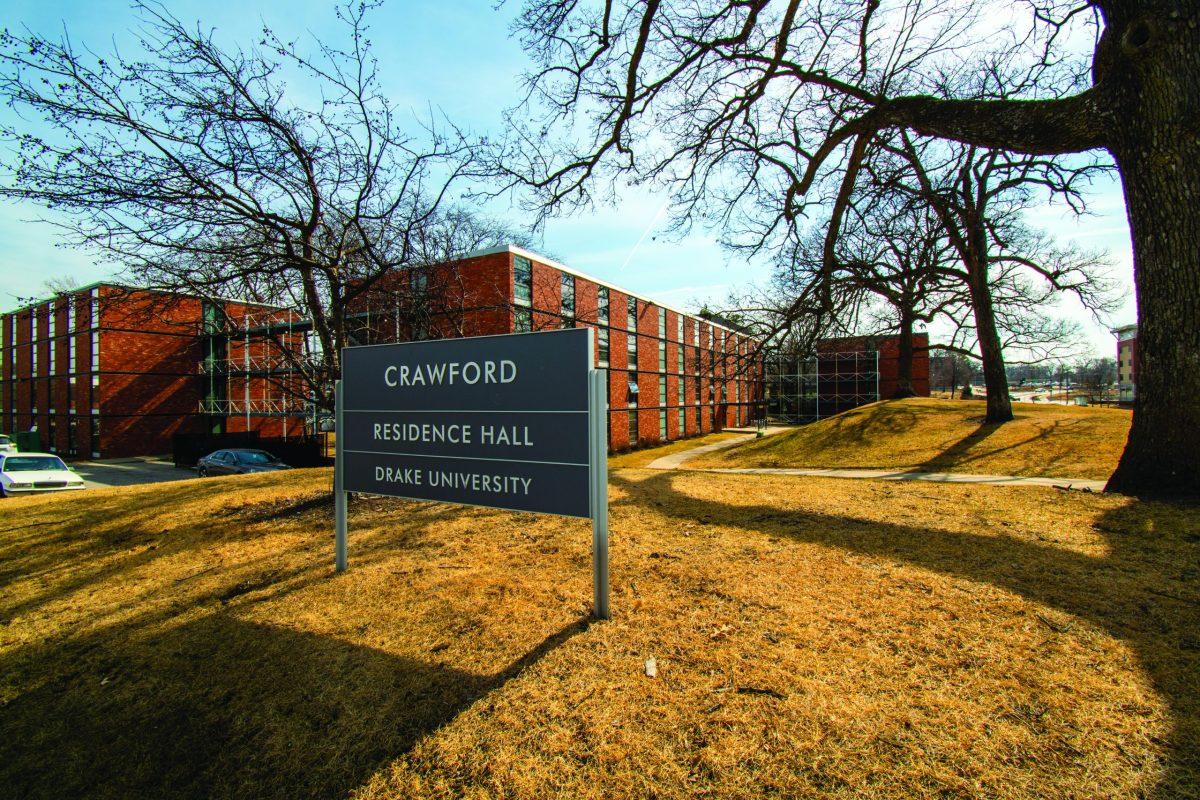During Black History Month, a message appeared at Crawford Residence Hall and Cowles Library that was targeted towards Black students. This got the attention of all members of the Drake community because the words were discriminatory against Black students.
“When we have people willing to go above and beyond and, you know, say racist things, not only say it, but put it in writing and then write it on whiteboards, write it throughout the library and just leave those notes everywhere, that’s a safety issue for a lot of Black students on campus. Because it’s like, it’s feeling not safe anywhere you go. When we walk off this campus we’re a target already because of the color of our skin. So then when we’re on this campus that’s supposed to be our home away from home, we’re supposed to feel safe there,” said Megan Lee, President of the Coalition of Black Students (CBS).
Related incidents like this have occurred more than once on campus. Some students say that they experience discrimination on an ordinary basis.
“Before I am student body president, I am a Black student on this campus, and the role that I occupy has not changed that experience. One of the reasons that I ran for this position is because I have experienced the trauma of racist incidents on and off this campus, and I wanted to have the ability to provide representation for Black students who haven’t felt seen or heard. Although this time is a unique experience from the everyday occurrences, so many of us face microaggressions and instances of racism on a daily basis,” said Morgan Coleman, student body president.
Some faculty members addressed discrimination by having a class discussion with their students.
“I am very grateful that three of my professors have taken the time to open the class for students to express how they feel, and that’s actually half of my professors, which is a great ratio, and this is no mark against them — all of my professors are white. And so it is very difficult for them to have an open discussion about race in a classroom when they are a white person and in a classroom full of white students,” said Maria Heath, a first-year student.
Not all faculty members are reaching out to Black students during times like this.
“A lot of people don’t feel comfortable. Like, a lot of white faculty does not feel comfortable reaching out to Black students when it is something racial. Like, these racial incidents are happening on campus, but that could also be an issue because it’s like we’re not even being acknowledged. That, you know, our safety is at risk,” Lee said.
Students are having discussions about equity and inclusion, however, not everyone is participating in these conversations.
“It is abundantly clear that the individuals who need to be having these conversations are not the ones in the room. For the individuals who contribute to the lack of safety that many Black students feel, it is a privilege to not care about or make DEI a priority because they are not the ones who are experiencing harm. While more people are willing to come to the table to be educated on our experiences and work towards anti-racism at Drake, there are inevitably individuals that we are missing,” said Coleman.
An idea that some students have is for classrooms to have other resources available to educate students.
“There should be resources in place. Like, if anyone should be talked to, it should be the people who are more likely to be committing the act rather than people who are affected by it. Because we already know what racism is, we already know what we feel about it, we’ve said it multiple times. We feel angry; we feel sad,” Drake student Ochu Asuelimen said.
Some students have ideas for how Drake can address race and discrimination in classrooms without putting the spotlight on students of color.
“Whenever it was a topic about discrimination and inclusivity, suddenly the entire classroom would not participate, no one would talk. Like, you would see them side-eyeing the only Black person in the room. And I get it, you don’t want to overspeak, but at the same time, whenever that happens, you are literally acquainting that singular person to represent the experience of everyone,” Asuelimen said.
Students say that difficult conversations are a way for us to grow as a community.
“The way for all of us to you know, grow as a people or grow as a Drake community is to become a more welcoming community for all students; is to not shy away from more of uncomfortable talks. Like, I definitely think that if you’re never uncomfortable, you’re not really growing. Because you’re not having those difficult conversations to gain perspective,” Megan Lee said.
Our student body president has a message for the Drake community.
“We need more non-Black students intervening when they hear racist remarks or see others perpetuating actions that are harmful. We all have a part in creating a campus that is safe for everyone — this means not being a bystander. This prevention takes place in the residence halls, our classrooms and in every space that we are a part of,” Coleman said.








Emily Wageman • Mar 24, 2022 at 8:54 pm
Love this article, Piper! You did an amazing job writing this and chose such a great topic/event to write about!